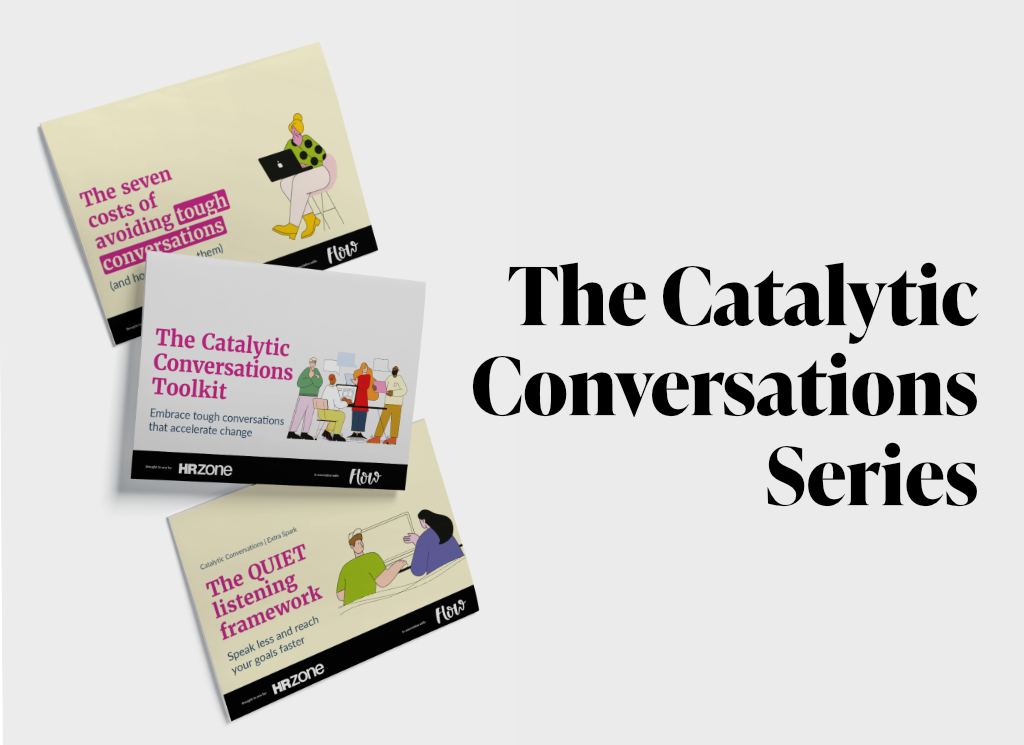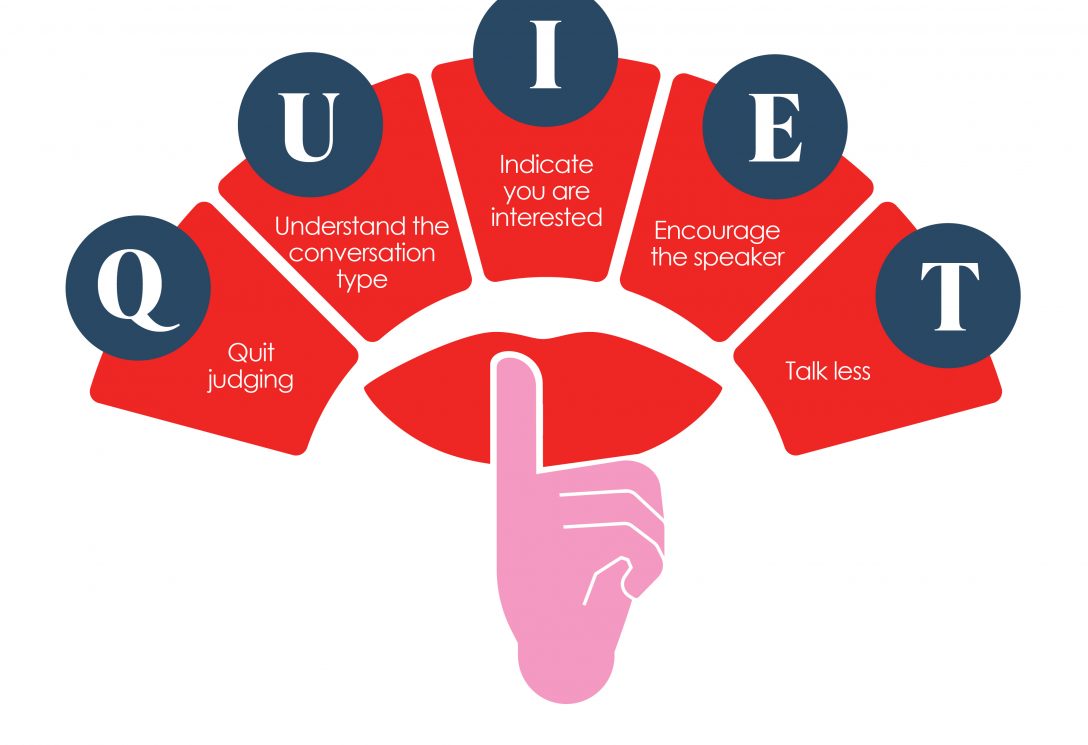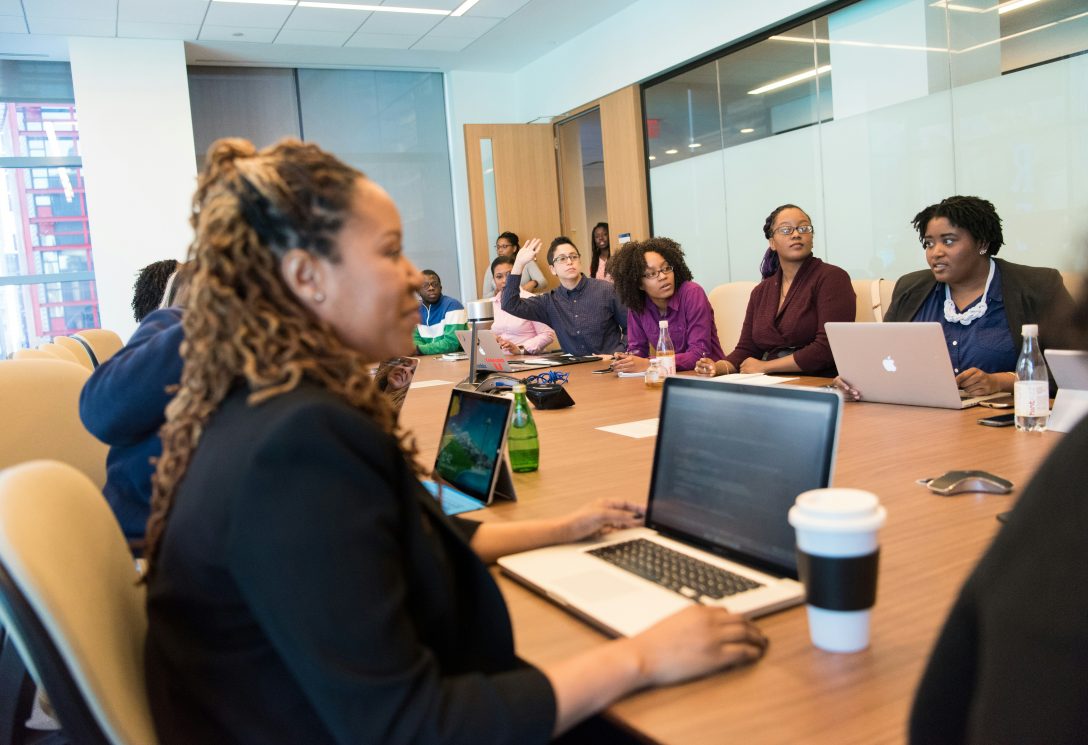Breaking your meetings habit

According to a meta-analysis by Atlassian, we spend 62 hours in meetings per month but consider half of those meetings unproductive. But even though we think half of them a waste of time, the habit persists. In an experiment at Dropbox, executives purged all standing meetings from employees’ calendars, but meeting bloat returned a few years later. We’ve tried ‘no-meeting Fridays’, but your colleagues have put meetings in any way because “there’s no other time.” We know that changing the behaviours of groups is more challenging. But if meetings are so costly, how do we break our addiction to them?
Synchronicity
Schedules and calendars have conditioned us to operate in synchronicity. Meetings are easy to schedule and our habitual response to how we communicate at work. We can have a ‘selfish urgency’ to schedule meetings convenient for ourselves without considering the workload of our colleagues. We schedule meetings as commitment devices for others to follow up.
We need to consciously think about the multitude of ways we could be communicating in more healthy and productive ways. That’s where James Stanier’s spectrum of synchronousness is helpful to visualise the other choices open to us as a team:
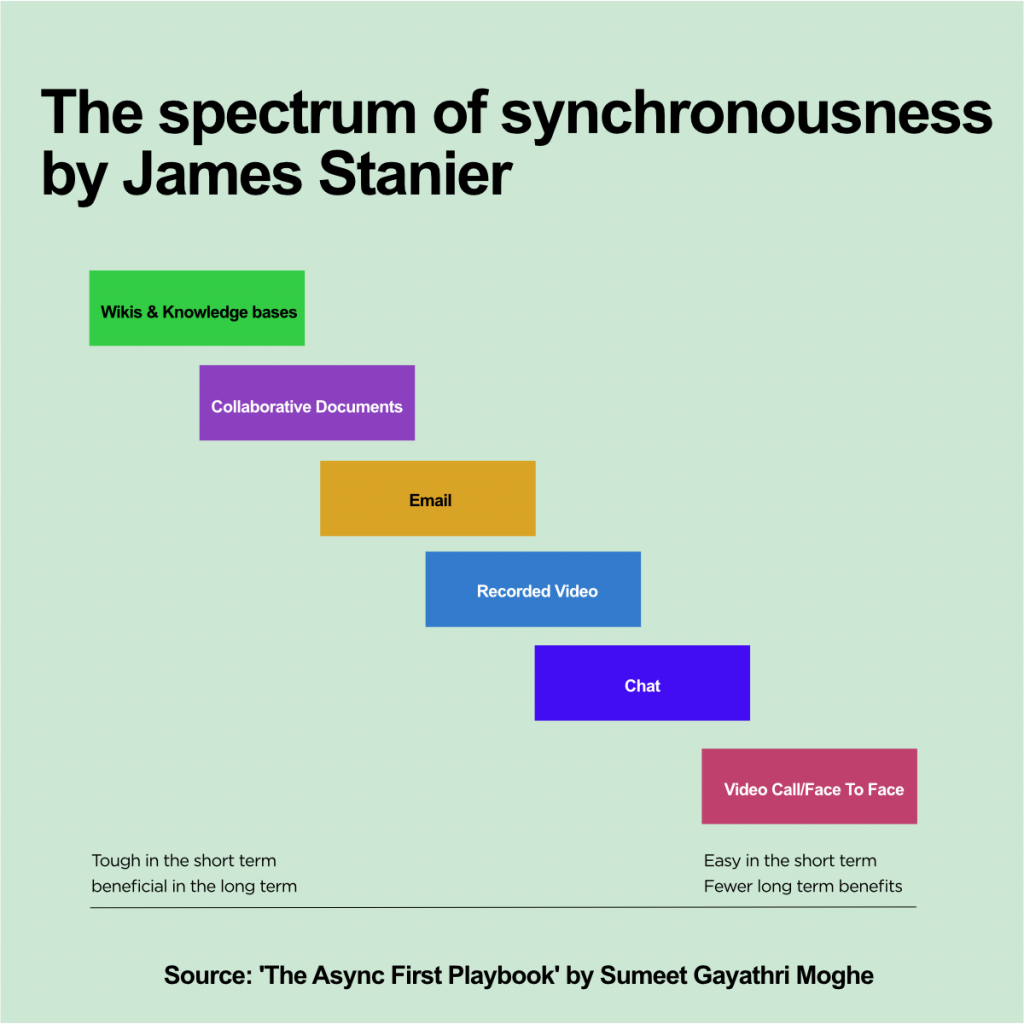
Asynchronous work is a different mindset
It’s a commitment to only meet when necessary rather than as the default. It’s a way of working that doesn’t require multiple people to be online simultaneously. Gitlab makes this more vivid by saying “you should assume that the recipient of your communication is asleep”.
The benefits of asynchronous communication are:
It’s more inclusive – allowing colleagues in different time zones, non-native English speakers and more introverted characters to contribute.
It’s more empowering – colleagues can choose when they want to work on a schedule that suits them.
It creates more time for deep work and action – without a Tetris calendar, you have more space to get work done. And without being so focused on coordinating calenders to meet, you do the work, incorporating offline feedback, without waiting for online availability.
It promotes higher quality thinking – when talking in meetings, we often form thoughts and opinions in the moment. When you write things down, your thinking has the chance to become more considered. Take one of the critical rituals at Amazon, the 6-Pager Narrative. Instead of PowerPoint, it’s a written document that allows teams to synthesise and evaluate complex information streams.
It improves knowledge sharing and reduces FOMO – we’ve all been in meetings where nothing is captured, which adds to the sense of time wasting. A writing practice helps fill in the context for colleagues, creates referenceable team knowledge, means no one misses out if they can’t attend and also helps future employees when they are onboarded.
Central to this mindset is effective written communication and transparent information-sharing. Making yourself clear in the written word is a skill and takes time but we mistakenly feel that meetings shortcut this. We can all recall time spent in meetings without remembering the consequences of what was discussed.
Do you really need a meeting?
Many companies have made good progress over the past few years in shrinking default meeting lengths, but can we all go further and cancel meetings? Meetings in your company might have a better reputation with the proper prep work, the correct attendance, an agenda and better facilitation to keep the discussions on track. But can we tackle the problem at source?
Gitlab underline that “working asynchronously is not a goal unto itself; rather, being considerate and opting to move a discussion or project forward asynchronously when feasible creates more space for synchronous moments.” Creating more space requires being more conscious of when a meeting is most appropriate. The frame of Complex, Connection, Considerate is a helpful reference to guide your decision-making. Meetings are most appropriate when:
- The subject is complex or highly nuanced.
- Building connection and belonging is important. This could be for a project kick-off or just catching up. We dangerously undervalue the importance of fostering connection and belonging in building high-performance cultures. The goal is how we balance connectedness with focus.
- Consideration is essential because you are sharing something that is sensitive.
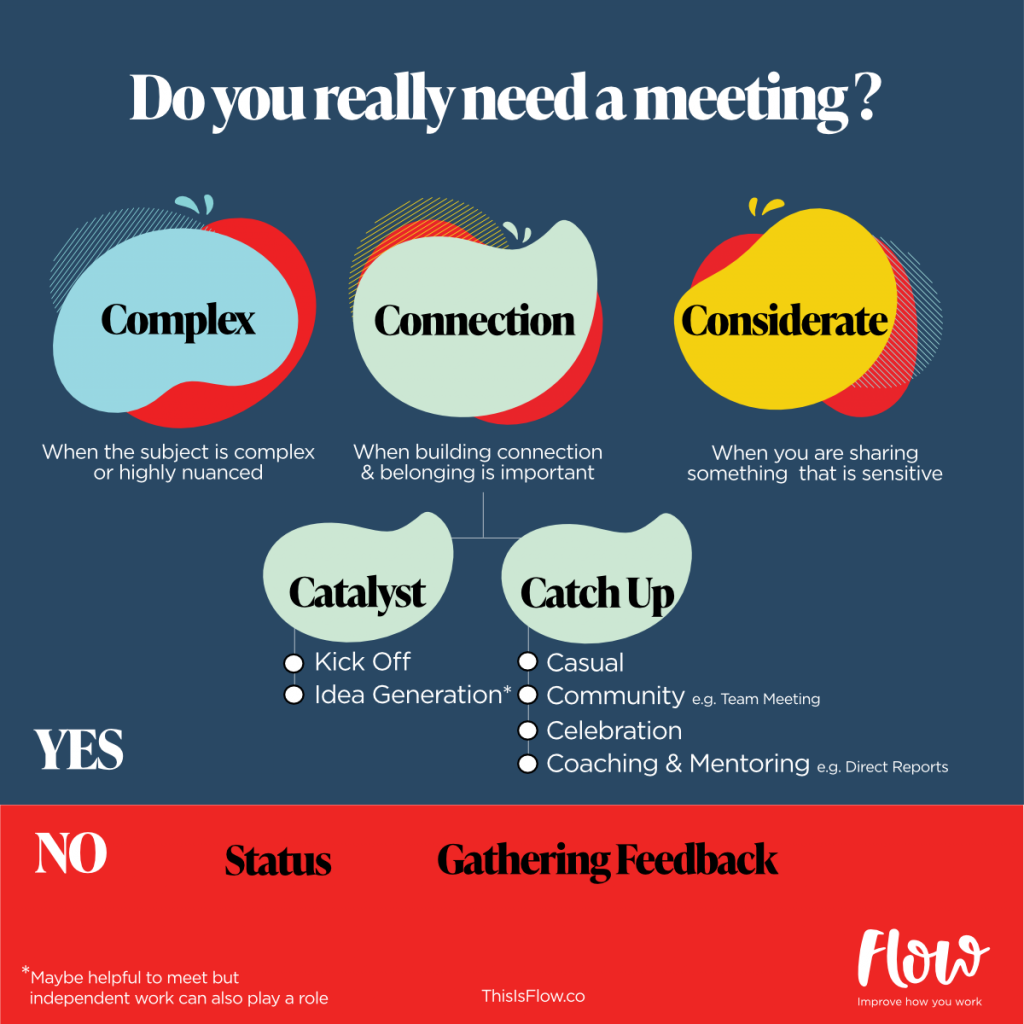
If you have a recurring meeting on your calendar that is for status updates, think about how the time could be better spent rather than for passive information transfer or for keeping stakeholders up to date. Besides, any more than eight people and you’re likely to you’re wasting your time.
Correcting our default scheduling tendency
James Clear explained that he coined the term ‘Atomic Habits’ because they should be easy to do, become a fundamental part of a larger system and create more energy. To break the tendency to schedule meetings, we need a new rule to make a new automatic behaviour.
“Meetings are the last resort, not the first option” – 37signals
You might call it a mantra, but in essence, it’s a simple, memorable rule that clearly sets expectations of how you want to work together. Proposing the experiment of switching to more asynchronous work is best done as part of reviewing your Team Agreement, your agreement of how you work together to create the best outcomes. That’s because our meeting addiction is a cultural problem, not just an individual one. In addition, the answer is not binary. Incorporating greater asyncronicity should be a phased experimentation. “Fire bullets, not cannonballs” in the words of Jim Collins.
In summary
If we want to gain greater control of our time and create the conditions where we can collaborate better and do our best work, we need to lean into our ingrained habits of scheduling meetings as the solution to all of our pressing communication needs. Fast & Easy is rarely the best for us, it creates more problems as a consequence. We can start by appreciating the benefits of asynchronous work and then agreeing on how we work as a team to collaborate in healthier, more productive ways.
Flow is a ways of working company. We help you to create the conditions where your people can flourish, where decisions, meetings and ideas can flow. If you’d like to discuss how we can help you to improve your Team Practices, get in touch at hi@thisisflow.co

